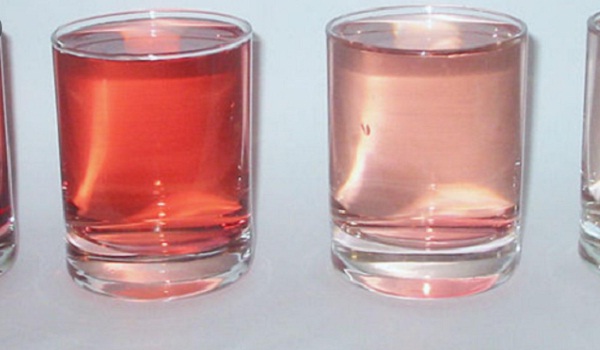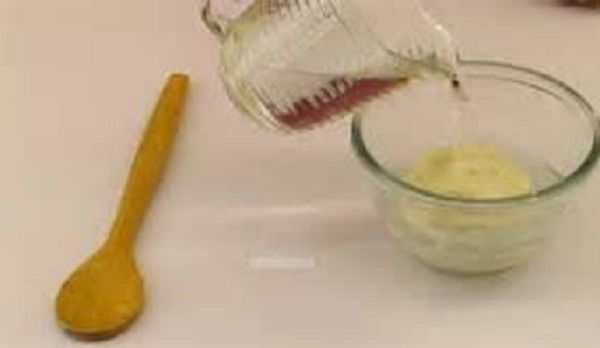What is dilution in a solution? necessary question to remember that inside a laboratory the dilution of substances is carried out. Important process because there the reagents are in solid form or in 100% concentrated solutions. Most often it is necessary to prepare less dense substances from pampering.
What is a dissolution and examples?
It is considered a homogeneous mixture of two or more pure substances. Where the solute can be found in different states than that of dissolution. The solvent, in the same physical state as the solution. As for the heat, flavor and its appearance are always the same, at its beginning and at the end. Its color is transparent because light passes through the solution.
As for the solute, its atoms are tiny, they are not visible to the naked eye. Both participants are unified, but it is the solute that distributes in the solvent and can form precipitate. It can be said that it is the decrease in the concentration of a substance. The proportion of the solute is small.
The amount of solute does not vary, only that of the solvent. It is the substance resulting from the homogeneous mixture of a solvent with one or more solutes or the combination, homogeneous union of substances of different states of matter.
Examples of solutions


Various examples of this theme can be observed in everyday life. We will start with the dissolution of the common salt or sugar, in this case the salt, sodium chloride and sugar are the solute (sto) in a certain amount of water as the solvent (ste), with a transparent appearance. In this case the combination of chlorine and sodium ions in varying proportions.
In soft drinks such as soft drinks where carbon dioxide produces effervescence and the gas is not observable. Alcohol and its types dissolved in water, consisting of 2-propanol and water.
The organic compound hexane which is used for the manufacture of paraffin wax. In the blood, composed of mostly water and nutritious substances. In addition, in the kitchens of our homes, where their food is made by means of food solutions are executed. As well as in chemical, biological and scientific laboratories.
In which different chemical substances are attached. Likewise, the air we breathe is another example of dissolution because it is the combination of different gases. Consisting of gaseous oxygen and gaseous nitrogen. The sea, where solutes are evenly distributed throughout the volume of water, forming crystal clear water.
Amalgam, homogeneous solution, solid and grayish in color. Also bronze and glass. Where metals that are soluble in each other participate. The coffee straining, which to a measure of coffee is added a certain volume of hot water. When adding a portion of cinnamon or chocolate to the water to strain the coffee to give it a deferential flavor.
What is the dilution process?
The dilution process is simple it consists of adding solvent to a portion of solute. That is, it is carried out by achieving a lower concentration from a starting concentration. A small amount of solute is taken to which a liquid solution is progressively added until it becomes thin.
The one with a certain amount of solute and a greater volume and weight. In addition, the initial moles are equal to the final moles. They can be combined in the various aggregation states. It consists in performing the measurement of a volume of a concentrated solution with a pipette. It is poured into a volumetric flask, adding the diluent to it up to the mark of the flask's capacity.


Depending on your aggregation status
They are classified: They are of three types: In the solid, liquid and gaseous state. The solid-state ones, the solvent and the solute can be a solid mass that can be joined to another also in the same or different state. It is found in the following ways: Solid with solid. Solid with gas, solid with liquid. Those in the liquid state, where the solvent is liquid like water.
They can be observed in combinations: Liquids with solids, liquids with gas and liquids with liquids. The solute adopts the three states of matter. Those of gaseous state, the solute is in a gaseous state (gas) like oxygen. They are achieved: Gas with solids, gas with liquids, gas with gas.
Depending on the concentration
They are classified as: Diluted, when they contain a small amount of solute, with respect to the amount of solvent present. Saturated or concentrated, if the amount of solute is the maximum that the solvent can dissolve at a given temperature. Over saturated, if the amount of solute is greater than that which can dissolve the solvent at a given temperature.
When it is possible to dissolve the solute above its saturation point, they are very unstable and tend to precipitate formation.
What is the difference between dissolution and dilution?
For dissolution, as the action of dissolving. The disintegration of a substance in a liquid. It is to separate, to separate, the parts that make up a solution. To cause another substance to pass into a state of dissolution by the action of another liquid. Pure solutes are used. The resulting substances is the homogeneous combination of molecules of two substances.
They don't react to each other. It is homogeneous because it is evenly distributed in the solvent. The atoms that make up the solute are small in size and are not visualized. They are transparent due to the fact that light passes through the solutes. The solute and the solvent are miscible. For dilution, it is the action of diluting.
It is to reduce the amount of solute in a solution. It is the increase in the proportion of liquid n by altering its content by adding a certain amount of water. The preparation of the dilution is from a concentrated solution and it turns out a less concentrated one. A small amount of a standard substance is taken, then more solvent is added.
Both the initial and the final substance have an equal amount of moles.
Basic features of a dilution
- They are homogeneous, because their composition is the same in the whole solution.
- The physical state (solid, liquid, gaseous) of the solute is same as the solvent.
- The dispersion is given molecular, atomic and ion.
- The solute does not form a precipitate in the bottom of the container.
- The concentration and composition may vary within certain limits
I hope that in this article you have got the answers you were looking for, I invite you to review whenever you deserve them.

